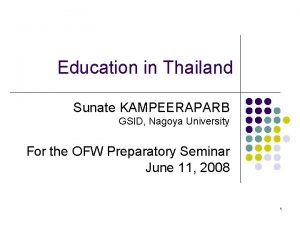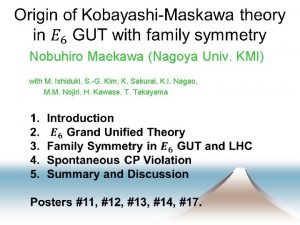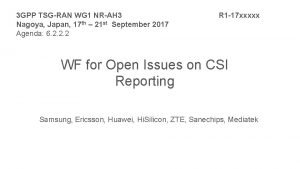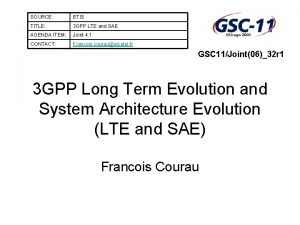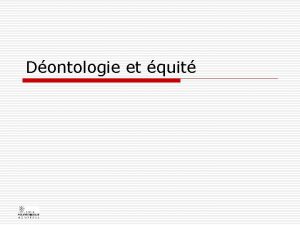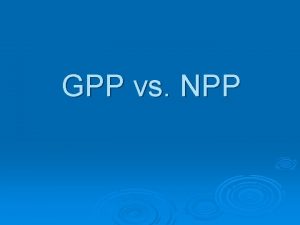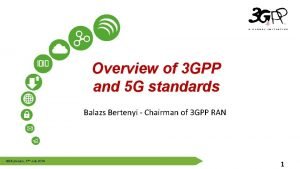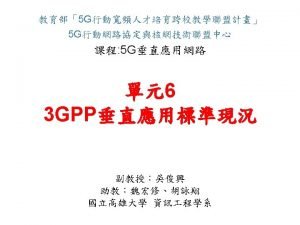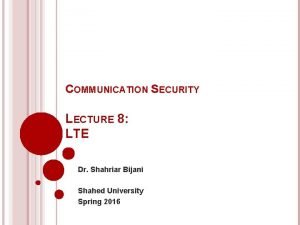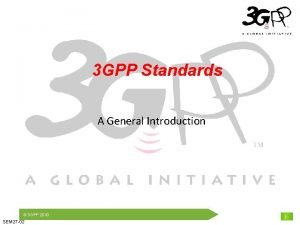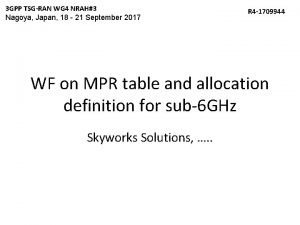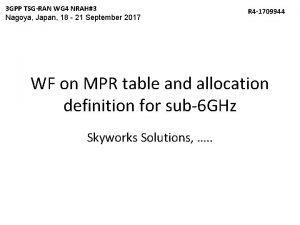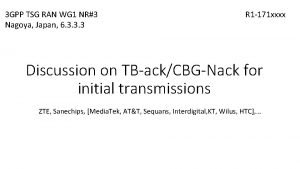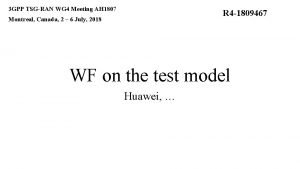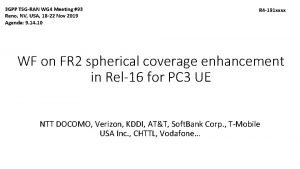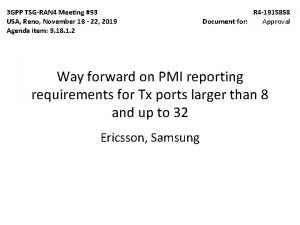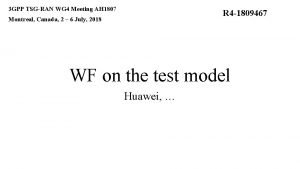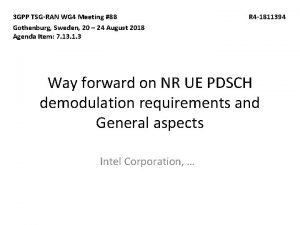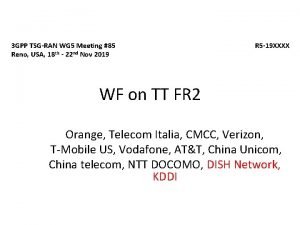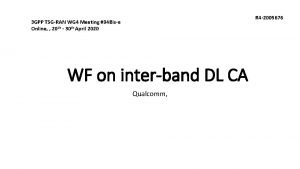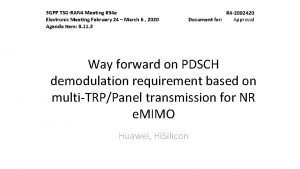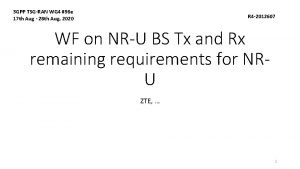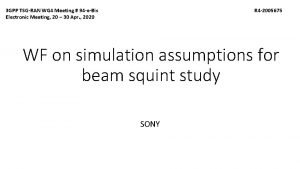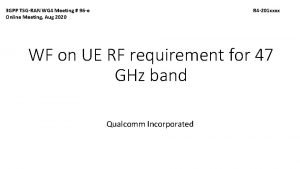3 GPP TSGRAN WG 1 NRAH 3 Nagoya











![Remaining codebook issues • Type II beam reporting [cf. R 1 -1714748] • Type Remaining codebook issues • Type II beam reporting [cf. R 1 -1714748] • Type](https://slidetodoc.com/presentation_image_h/8093260f0375420af66f025a15117bb4/image-12.jpg)









- Slides: 21

3 GPP TSG-RAN WG 1 NR-AH 3 Nagoya, Japan, 17 th – 21 st September 2017 Agenda: 6. 2. 2. 2 R 1 -17 xxxxx WF for Open Issues on CSI Reporting Samsung, Ericsson, Huawei, Hi. Silicon, ZTE, Sanechips, Mediatek

Procedures and UCI multiplexing • Refinement on R 1 -1715288

Encoding for short PUCCH-based reporting › Note: maximum payload for short PUCCH is not yet fixed, but ~ 20 -25 bits. › Assuming delta CQI is not used, worst-case for a complete report CRI/CQI/PMI/RI is 3+8+PMI+3 = 14+PMI short PUCCH is sufficient for containing P-CSI report for all scenarios › Proposal: Short PUCCH is only used for the following cases: › Wideband partial-band reporting (one CSI for all the subbands in the CSI reporting band) › Proposal: The same information payload irrespective of RI/CRI in a given slot (to avoid blind decoding) › Note: the size of information payload can be different according to the largest number of CSIRS ports of the CSI-RS resources configured within a CSI-RS resource set › Details to be decided in the uplink control session. For example: › When PMI+CQI payload varies with RI/CRI, padding bits are added to RI/CRI/PMI/CQI prior to encoding to equalize the payload associated with different RI/CRI values › RI/CRI/PMI/CQI, along with padding bits when necessary, is jointly encoded

Encoding for long PUCCH-based reporting › Long PUCCH is used for subband reporting differences in payload for different RI/CRI values tend to be large › If padding bits are used to equalize the payload, too many padding bits may be needed › Note: The maximum payload for RM code is still undecided (most likely 11 bits). This will determine whether RM or polar code is used for a given CSI payload. › Proposal: For wideband or partial-band reporting, use the same solution as short PUCCH › The same payload irrespective of RI/CRI › Proposal: For subband reporting › Use solution as for PUSCH (two-part encoding): slide 4 of R 1 -1715288 › Note: CRI/RI can be decoded first to determine the payload of PMI/CQI

Encoding for PUSCH-based reporting › For Type II: › The size of wideband amplitude info depends on RI and the size of PMI depends on both RI and wideband amplitude info 2 -part solution requires blind decoding › The difference in payload between RI=1 and 2 can be handled by signaling on DCI while maintaining one-slot reporting constraint › In slot n, g. NB cannot preempt PUSCH RA before RI is received from the UE (transmitted in slot n–D), regardless whether the extra RA for the 2 nd layer is in frequency (1 -slot) or time (2 -slot) domain. Hence this extra RA cannot be assigned to another UE anyway › Proposal: For Type II, › CSI parameters of a Type II CSI report are not multiplexed across multiple PUSCH transmissions › [FFS: multiplexing CSI parameters of a CSI report across two PUSCH transmissions] › Use a two-part scheme with › 1 st part contains RI, CQI and indication of the number of non-zero wideband amplitude coefficients per layer › Fixed payload size used for 1 st part; 2 nd part contains remaining CSI › Indication of the number of non-zero wideband amplitude coefficients per layer in the first part

Proposal: Encoding for PUSCH-based reporting › Separately encoded parts of a CSI report on PUSCH carrying UL-SCH have different transmission priority › Parts used to identify the number of information bits in other parts of the report have higher priority › Higher priority parts are first included in a transmission in their entirety before lower priority parts are included › Information bits and/or channel coded bits of a lower priority part may only be partially transmitted or not transmitted › Omit CSI parameters corresponding to at least one subbands for part 2 › TBD by RAN 1#90 bis: if all of part 2 can be dropped as a special case › TBD by RAN 1#90 bis: if a decimation ratio is used and/or a priority pattern is used to order subband CSI, or if weak subbands are dropped › FFS: if CQI depends on omitted CSI parameters

CSI reporting characteristics › Potential down selection for semi-persistent CSI › Issue 1: Functional overlap between P-CSI and S-CSI – can this be minimized, e. g. by using long PUCCH only for higher payload? › Issue 2: Functional overlap between S-CSI and A-CSI on PUSCH – since long PUCCH has high payload capacity, why do we need PUSCH? Proposals: › Type II CSI is carried only on PUSCH › Configure whether a long or short PUCCH resource is used to carry a CSI report. › As long as payload size of long or short PUCCH is sufficient to avoid multiplexing a CSI report across multiple PUCCH transmissions › Note: this allows a small CSI payload to be transmitted on long PUCCH e. g. for coverage › Support S-CSI on PUSCH using similar mechanism to LTE SPS › Resources/MCS for S-CSI on PUSCH are allocated semi-persistently using DCI › S-CSI supports type II › [FFS minimum periodicity for Type II, e. g. 5 ms]

Frequency granularity • Subband, partial band, wideband, and CSI reporting band • Subband sizes

Proposal › › – FFS if value of N is fixed for a certain bandwidth or configurable from a set of values or if it depends on RBG /PRG size – Values for N to be decided in RAN 1 NR Adhoc #3 A CSI reporting setting configuration defines a CSI reporting band as a subset of subbands of the bandwidth part, and following information is configured in CSI reporting setting – Single / Multiple CQI: Partial band CSI-RS Active bandwidth part Carrier bandwidth Subband For CSI reporting, a subband is defined as N contiguous PRBs, the value of N depends on the bandwidth of the active bandwidth part CSI reporting band 2 Subbands › Single CQI is reported per CW for the entire CSI reporting band, if single CQI is configured › CQI per CW per subband is reported for each subband in the CSI reporting band if multiple CQI is configured – Single / Multiple PMI: Example › Single PMI is reported for the entire CSI reporting band, if single PMI is configured › PMI (only i 2 for > 2 TX) is reported for each subband the CSI reporting band, if multiple PMI is configured – The UE is not expected to be configured with a CSI reporting band which contains subbands where RSs for channel and interference are not present – The subset of subbands can be configured to be contiguous or non-contiguous

CSI reporting content • Joint support for hybrid mechanism 1 and semi-open-loop [cf. R 115008] • Support for hybrid mechanism 2

Proposal › A CSI report can contain only PMI consisting of only i 1 using Type I single panel codebook and RI › Note: i 1 identifies a combination of variables {i 1, 1 and i 1, 2} or {i 1, 1 , i 1, 2, and i 1, 3} in 38. 214 section 5. 2. 1. 2 › A CSI report can contain only PMI consisting of only i 1 using Type I single panel codebook, CQI and RI, computing CQI assuming PDSCH transmission with Np>=1 precoders, where › UE can assume that one precoder is randomly selected from the set of Np precoders for each PRG on PDSCH › [The PRG size in CSI feedback is RRC configured] › The precoders for CQI calculation are indicated by codebook subset restriction
![Remaining codebook issues Type II beam reporting cf R 1 1714748 Type Remaining codebook issues • Type II beam reporting [cf. R 1 -1714748] • Type](https://slidetodoc.com/presentation_image_h/8093260f0375420af66f025a15117bb4/image-12.jpg)
Remaining codebook issues • Type II beam reporting [cf. R 1 -1714748] • Type II overhead reduction [cf. R 1 -17] • Codebook subset restriction for Type II + pending details for Type I SP/MP • Extension of multi-panel codebooks

Type II beam reporting: background ›

Proposal: Type II beam reporting ›

Type II beam reporting: Example of beam sorting

Type II overhead reduction • The Type II NR codebook was agreed at RAN 1#89 as described in R 1‑ 1709232 • The agreement includes the following in reference to the wideband (WB) amplitude feedback: o PMI payload can vary depending on whether an amplitude is zero or not § Details are FFS • This WF proposes the details for achieving the reduced payload, where the payload reduction occurs in the feedback of subband (SB) differential amplitude and subband phase. o A detailed description of the rationale behind the proposal can be found in R 1 -1716505 • Proposal: For coefficients where the reported wideband amplitude is zero, the corresponding subband amplitude (if configured) and phase coefficients are not reported, with details defined on the next two slides. – Apply the proposal to the NR Type II single-panel codebook and the NR Type II codebook for beamformed CSI-RS.

Type II overhead reduction: definitions for specification ›

Type II overhead reduction: specification text for the proposal ›

Proposal: CBSR for Type II ›

Proposal: Remaining details for Type I SP/MP CBSR ›

Proposal: Extension of MP codebook ›
 Gsid nagoya
Gsid nagoya Thomas ryttov
Thomas ryttov Banquets loc
Banquets loc Nagoya university
Nagoya university Ran x nahoya
Ran x nahoya Malacidin
Malacidin San diego to nagoya
San diego to nagoya Gpp lte meaning
Gpp lte meaning Gpp lte
Gpp lte Gpp network
Gpp network Dontologie
Dontologie Gpp lte meaning
Gpp lte meaning Gpp vs npp
Gpp vs npp Gpp standards
Gpp standards Gpp bus
Gpp bus Maksud outstanding gpp
Maksud outstanding gpp Gpp good pharmacy practice
Gpp good pharmacy practice Gpp e
Gpp e Gpp lte means
Gpp lte means Apple gpp
Apple gpp Gpp
Gpp Cara membuat gaji induk di aplikasi gpp 2020
Cara membuat gaji induk di aplikasi gpp 2020
